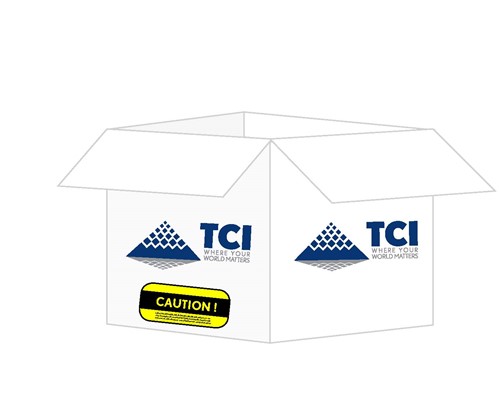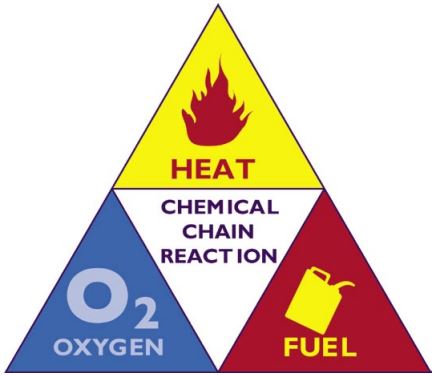Powder Coating Troubleshooting Guide
Chapter Twelve: Safety Issues With Powder Coatings
This manual is a guide to the technology of electrostatic coating operations. It is important that the equipment operators and supervisory personnel understand the requirements for safe operation. This manual does not answer every circumstance. Each organization should examine their own coating operation, develop their own safety program, and insure that their workers follow correct procedures.
Be familiar with the safety requirements prescribed under the OSHA act of 1970 and in NFPA bulletin #33.
OSHA hazard communication standard CFR 29 1910.1200 requires chemical manufacturers to evaluate chemicals produced to determine if they are hazardous. Manufacturers review chemical substances to determine if they are carcinogenic, toxic, an irritant, dangerous to human organs, flammable, explosive, or reactive. This information is available to workers in the material safety data sheets (MSDS) that are supplied with materials. All powder coating materials are finely ground particulates. Such materials are classified by the American Conference of Governmental Industrial Hygienists (ACGIH) as particles not otherwise classified or (PNOC). PNOC’s have a Threshold Limit Value (TLV) of occupational exposure of 10mg/m3 , a level established for nuisance particulates.
In operations where operators are working outside of the spray enclosure, a disposable dust mask is usually acceptable for respiratory protection. If the dust levels are higher than the TLV, half masks with cartridge filters can be used. For very high concentrations of powder or operations where operators are working inside the spray enclosure, full face masks with fresh air supply may be appropriate.
To limit the exposure to the eyes and skin, clothing and protective eye ware can be used to cover as much of the body as possible. Personnel grounding is the most difficult area of electrical hazard control. Most people do not realize what an excellent grounding source they are and that they can become a capacitor in a very short time. Manual operators are generally grounded through the spray gun itself as long as they hold it properly and the equipment is in proper working order. ITW Gema recommends that no glove be worn during the spray process. If gloves are worn during application, they should be specially designed for electrostatic application so that the operator is not isolated from ground. Powder should not be blown off of the skin with compressed air because it can force abrasive particles into the skin and eyes. Washing with soap and water is recommended for removal of powder from the skin. Good housekeeping should be practiced to reduce accumulation of powder in the area and further reduce exposure.
Handling of Powder Coatings:
- Read the MSDS.
- Avoid excessive skin exposure.
- Wear proper respiratory equipment.
- Wear proper clothing and eyewear.
Fire Risk:
- Maintain a safe concentration of powder in air- outside the explosion (flamability) limits.
- Eliminate any sources of ignition
- Maintain a good ground on everything in the powder coating system.
- Maintain a good ground throughout the racks.
Pretreatment Chemicals:
- Read the MSDS.
- Avoid skin contact.
- Wear recommended safety clothing
- Maintain good ventilation.
High Temperature Environments:
- Limit access
- Never open washer or oven during operation.
- Disconnect power before entering.
- Use good lighting when entering
- Wear a hard hat in areas where it is neccessary to stoop.
- Know the hazards inside the equipment.
For safe handling of materials and safe operation of equipment:
ALWAYS FOLLOW THE MANUFACTURERS WRITTEN PROCEDURES!

Elements that Should be Controlled or Eliminated:

- Powder to air mixture - keep powder concentration outside the explosion (flamability) limits.
- Compressed air supply.
- Booth air flow.
- Sparks from poor grounds.
- Electrical equipment.
- Matches
- Cigarettes
Controlling Powder to Air Mixtures:
- Engineered powder systems.
- Quality spray guns.
- Exaggerated powder output.
- Size of openings
- NFPA & OSHA exhaust guidelines.
- System expansion factors.
- Reduced efficiency factors.
Heat / Ignition Source
(Sparks from poor grounds, Electrical Equipment, Matches, Cigarettes)
Oxygen
(Compressed air supply,
Booth air flow)
Fuel
(Powder to Air Mixture)
Grounding an object means providing an adequate path for the flow of electrical charge from the object to ground. An adequate path is one that allows the charge to dissipate faster than charge is accepted to the part. NFPA 77 states the electrical resistance of such a leakage path may be as low as 1 Mega Ohm but the resistance can be as high as 10,000 Mega Ohms and still provide an adequate path in some cases. Powder coatings standards use one (1) Mega Ohm or less as a working ground to help insure that proper discharge is achieved.
An ungrounded part will accept some voltage and attract some charged powder but at some point will begin to repel the charged material. Examples of difficulties related to poor grounding are halos around hooks, inability to penetrate Faraday areas, and inconsistent or low film build. Larger parts will not show the effects of poor grounding as quickly as very small parts.
Poor grounding is a major safety issue. If the parts are isolated from ground they can build up voltage to a point and then discharge to ground, creating an arc that has the potential to ignite the powder in the air-stream.
What is a good ground?
Resistance greater than 1 Mega Ohm is considered to be loss of ground in the industry and is used by most equipment companies as a standard for their systems.
How is ground measured?
Ground is measured with an ohmmeter. One cable is attached to a known ground and one is attached to the rack contact or part. If there is resistance to conductivity greater than 1 Mega Ohm the system needs to be cleaned. Additional tests can tell precisely where the loss of ground is occurring; from house ground rod to the rail, the rail to the conveyor, conveyor to hanger attachment, hanger attachment to rack, or rack to part.
ONE OHM OR LESS IS THE ACCEPTED STANDARD IN THE POWDER COATING INDUSTRY
Other Chapters
- Early Powder Coatings, Uses, and Types
- Manufacturing of Powder Coatings
- Powder Chemistries, Formulations, Comparisons, and Uses
- Comparisons to Liquid Coatings
- Measuring Up the Product
- Pretreatment
- Powder Application Methods and Equipment
- Powder Coating Recovery Equipment
- The Electrostatic Charge Process
- Powder Application Tips
- Powder Curing Process
- TCI Troubleshooting Guide
- Glossary of Industry Related Terms
